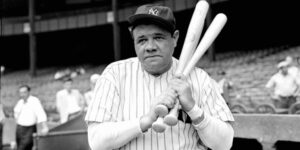
A season that started with high expectations for the New York Yankees was headed toward a disappointing conclusion.
As September 1929 rolled around, the defending World Series champs lost three straight to the Philadelphia Athletics en route to a distant second-place finish.
But the standings mattered little to the incarcerated men at Sing Sing prison in Ossining. The Bronx Bombers, led by Babe Ruth and Lou Gehrig, were coming to play an exhibition game on Sept. 5.
The bleachers were filled with 1,500 incarcerated men plus a staff of heavily armed guards for the game between the Yankees and the Ossining Orioles, a team composed of prisoners.
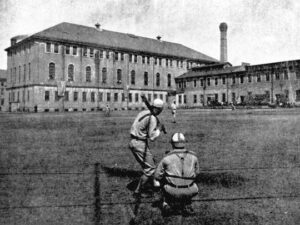
The Orioles were no slouches, entering the game with a record of 32-6, playing against visiting amateur ball teams. But the prison nine were no match for the Yankees, who won 17-3.
Ruth didn’t disappoint, clowning around with the crowd and signing autographs. He stroked a double in his first at-bat, followed by three mammoth home runs.
His second-inning blast took on legendary status, clearing the prison’s 40-foot wall, watch towers and New York Central Railroad tracks before finally landing on a bluff. Guards in the towers applauded the ball’s flight, which traveled more than 500 feet and according to some accounts up to 600 feet.
The Bambino then took the mound to pitch the last two innings, and in the ninth was reportedly tagged for a homer by one of the prisoners.
As the man rounded the bases, Ruth shouted, “Hey! Are you eligible to sign a contract?,” according to an account by historian Gary Sarnoff.
He’s got one now,” replied a prisoner in the bleachers. “He’s a ten year man, Babe.”
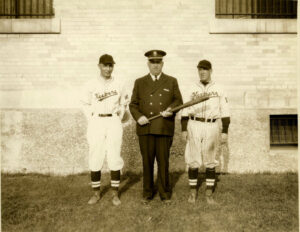
Jesse Collyer, the prison’s recreation director, recalled the Babe’s visit in an interview with a Florida newspaper years later.
Collyer said he sidled up to the Bambino and told him to give the spectators a thrill.
“That day, he called three shots to left, center and right,” Collyer told the interviewer. “And he hit it where he pointed every time.”
The New York Times’ account, however, reported Ruth’s three homers all cleared “the lofty right field wall.”
The Bambino was winding down a record-breaking season, becoming the first player to surpass 500 home runs. He batted a sizzling .345 with 46 round-trippers and 154 RBI that year. Gehrig hit .300 with 35 homers. This was during a 154-game season that decades later was lengthened to 162.
Brent Glass, executive director of the Sing Sing Prison Museum, said the Yankees’ visit was “part of a larger story of Sing Sing as an icon in America’s popular culture.”
The prison was “a place where the movies were made,” Glass added. “The New York press covered everything that happened at Sing Sing because it was so close to New York City.”
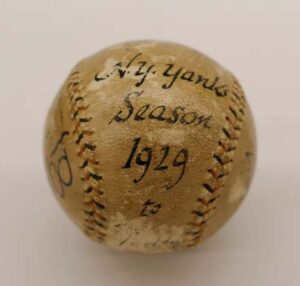
The prison museum acquired a baseball signed that day by Ruth, Gehrig, Earl Combs and Bill Dickey. The ball is in storage awaiting the museum’s projected opening by 2025 at the site of the former Olive Opera House in downtown Ossining.
A bat swung by The Babe that day was auctioned off for $126,500.
Jesse Collyer got his start as an umpire at Sing Sing, a skill that later took him to spring training with the Brooklyn Dodgers. He went on to serve 12 years as village mayor and was dubbed “Mr. Ossining” for his many civic contributions.
Captive audience
Recruiting the Yankees was an effort by Sing Sing Sing warden Lewis E. Lawes to boost morale after a summer during which rioting broke out at the state’s prisons in Dannemora and Auburn.
Lawes, a proponent of prison reform, had upgraded Sing Sing’s baseball diamond to professional caliber and installed seating for 3,000 spectators.
“A baseball game or a football contest with reputable outside teams serves a twofold purpose: visitors learn to understand that prisoners are human, and prisoners appreciate the necessity of playing the game on the square with their fellows,” reads a quote from Lawes on the Sing Sing Prison Museum website. “The urge for normal contact that is thus kindled keeps many prisoners to the line of reason and conformity. Its influence is far reaching.”
The Yankees weren’t the first Major League club to play an exhibition game at Sing Sing. The New York Giants baseball team visited several times in the 1910s and 20s.
The prison baseball team was part of Sing Sing’s Mutual Welfare League, a rehabilitation program. The Orioles played against teams fielded by businesses and other organizations including police and fire departments.
The prison team’s games got plenty of press. A front-page headline in The Peekskill Star on Aug. 18, 1927, reads “Sing “Sing Inmates ‘Murder’ Tire Factory Workers in 9-1 Victory.”
“Sing Sing Orioles Beat Yonkers F.D. Team Before A Captive Audience” reads a front page headline in the Oct. 21, 1929, Yonkers Herald.
The Mutual Welfare League was disbanded sometime around 1930.





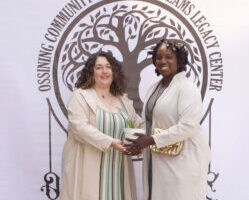

Rob, Another interesting tidbit, especially to NY Yankee fans!
Thanks to my faithful California readership
Interesting and highly readable! Thanks, Rob.
Captive Audience. Very Good!